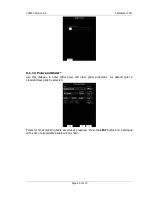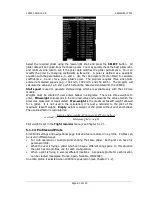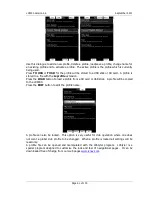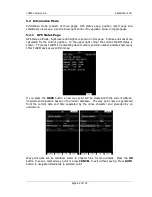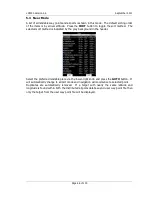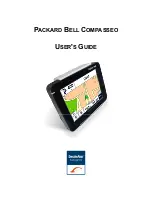
LX9000 Version 2.6
September 2011
Page 51 of 130
best sensor to use is the combined pitot/static Prandtl tube. If problems are experienced
with the electronic TE compensation the most likely cause is the glider's static source. The
static source can be checked by plumbing the pneumatic tubes for electronic compensation
and then setting the TE: to 0%. In still air accelerate to approximately 160 km/h and slowly
reduce the speed. Observe the vario indicator. If the static source is good the vario should
immediately start to move to show a climb. If the needle firstly shows increased sink and
then moves to a climb, the static source of the glider is unsuitable and there is no way to
provide successful TE compensation electronically. The use of a dedicated and accurate fin-
mounted pitot/static source such as a Prandtl tube might help.
5.1.12.1.2
SC Switch
The LX9000 has an input for an external speed command switch which is wired to the vario
unit. Using the external switch it is possible to switch between SC and Vario manually.
Setting the
SC switch
to
ON
means that closing the switch will cause the instrument to
enter SC mode and setting
SC switch
to
OFF
means that closing the switch will select Vario
mode. There is a third option by setting SC INPUT to
TASTER
and connecting a push
button to the input; each key press will toggle between SC and Vario (mandatory setting for
LX Remote).
5.1.12.1.3
Temperature Offset
The LX9000 is supplied with an external outside air temperature (OAT) sensor. With the
offset setting it will correct static errors of temperature measurement.
There is another input called VARIO PRIORITY. When this input is activated by
grounding the appropriate wire the unit will change over to Vario immediately.
This input wire is set open (not grounded) as a factory default on delivery.
5.1.12.1.4
Altitude Source
The LX9000 has two pressure altitude sensors. One is built into the main digital unit and is
used for the IGC recorder and the second one is built into the vario unit and is connected to
the glider pitot-static system. Changing the altitude source defines which sensor is used for
pressure altitude used in program.
5.1.12.2
Vario Indicator Setup*
The vario indicator is always part of the vario unit. However an unlimited number of
secondary vario indicators can be connected to the system using the RS485 system bus.
There are three different types of vario indicators;
LCD vario indicator with
monochrome LCD
,
USB-D type of vario indicator
or
V5 vario indicator
.
LCD vario indicator and USB-D type of indicator are setup through menus Indicator 1 –
Indicator 4, whereas V5 vario indicator is identified by its serial number and is setup through
menu Indicator Sn#XXXXX.
All new instruments are delivered with V5 vario indicator.
5.1.12.2.1
V5 Vario indicator
V5 Vario indicator
is having mechanical needle and colour screen with 320x240 pixels
resolution on which user selectable data are displayed.
Each V5 vario indicator is identified by a serial number, which is also displayed on hardware
menu. Therefore literally unlimited number of vario indicators can be connected to RS485
bus and each of them can be setup separately.























